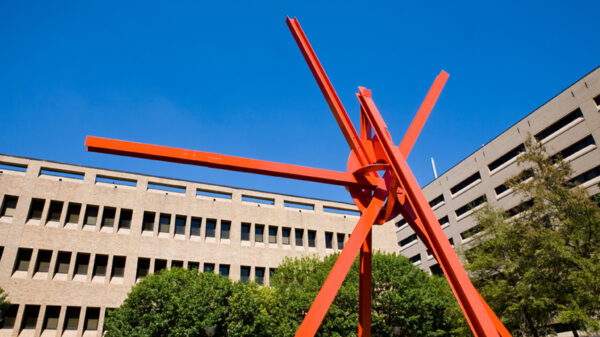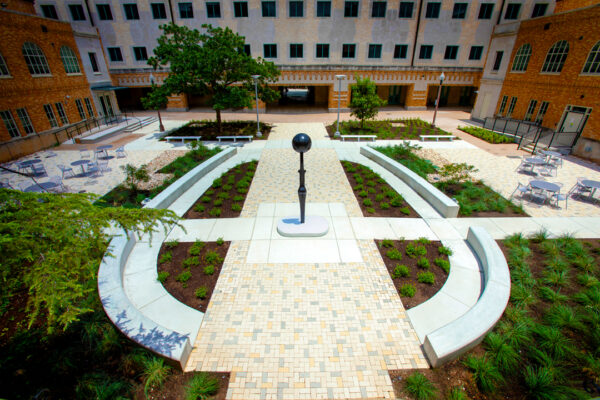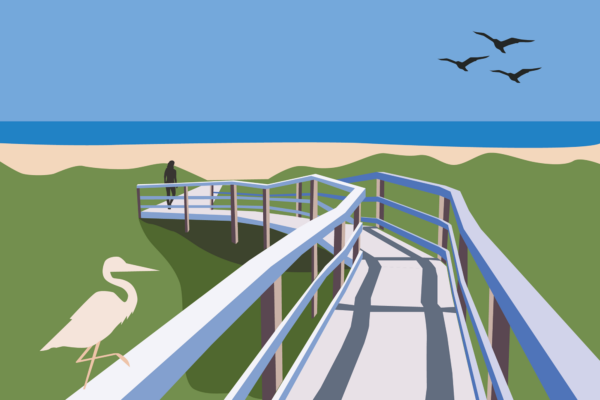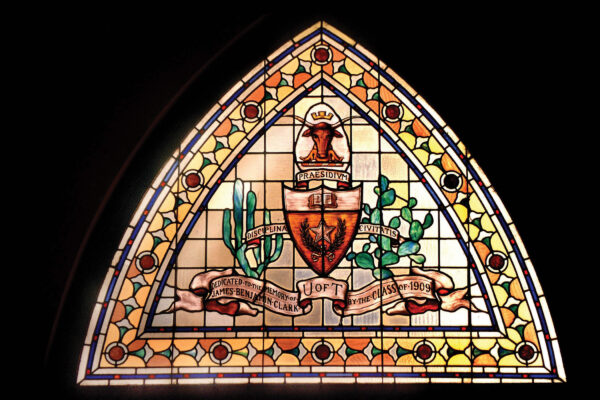The sweeping silver lines of the aluminum canoes that loom over Speedway in Nancy Rubins’ “Monochrome for Austin.” The paintings of light formed by James Turrell’s “The Color Inside” Skyspace atop the Student Activity Center. The vibrant red beams of Mark di Suvero’s “Clock Knot” at the corner of Dean Keeton Street and Speedway.
These are among the most prominent pieces in Landmarks, The University of Texas’ public art program. But its newest work, installed this summer, is every bit as commanding.
“Sentinel IV,” by New York-based artist Simone Leigh, stands more than 10 feet tall in the courtyard of the Anna Hiss Gymnasium. The bronze figure is inspired by a spoon used in fertility rituals in southern Africa, Leigh said during an online celebration of her work in July, a classic object in African art tradition that combines a female body with an everyday tool.
The piece, according to Landmarks’ website, “honors Black femininity while also investigating historical and intersecting ideas of race, beauty, and the association of Black women’s bodies with work.”
“That it’s called ‘Sentinel,’ the idea that it is protecting, that it’s holding space, holding court, is appropriate for that space,” says Andrée Bober, the founding director and curator of Landmarks. “It honors history, so it’s looking backward but it’s also looking forward.”

“Sentinel IV” is the first piece by a Black woman in Landmarks’ collection. Leigh’s identity and her subject matter are relevant for Landmarks’ overall goals and for the history of the space, Bober says.
“I was thinking about Anna Hiss Gym and how it was once the center of physical and social activity for the women who were on our campus, and how that whole area was sheltered by the Tower and these other masculine architectural forms,” she says. “There was an assumption that women were delicate organisms that needed to be protected. This space was designed to keep women secluded, but it ended up being about them finding their own voices and building their own community.
“So going into the project and imagining possibilities, it was clear from the outset that we wanted to work with a woman artist. And in particular, we were interested in working with a woman artist of color because part of our overall strategy is making sure that the artists we present reflect the complex audiences we serve.”
The decision to acquire “Sentinel IV” proved prescient. The Landmarks committee selected Leigh’s work before the racial protests of summer 2020, and before Leigh was chosen to represent the U.S. at the 2022 Venice Biennale.
In another first for Landmarks, the landscape was specifically crafted to showcase “Sentinel IV.”
“Everything in the courtyard was designed with the intent of creating a space that is welcoming, where people can unplug, reflect and build community together,” she says.
It’s been an underutilized space, Bober says, but one that she hopes people will seek out.
“A metaphor from the landscape architects is that Speedway is like a giant rushing river of pedestrians, and the courtyard is a quiet little eddy,” she says. “I imagined what that piece could signal to all the people who would see it. And the message is: You are welcome here, you deserve to be heard, and everyone is invited to be part of the conversation.”
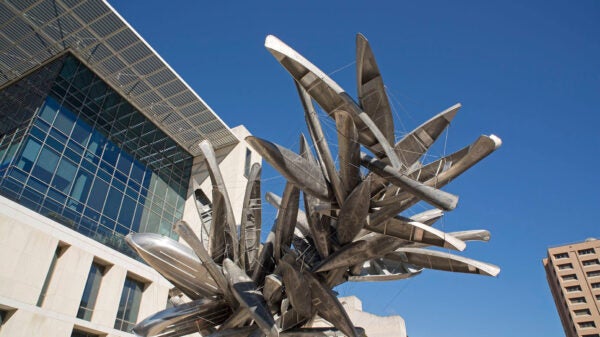
LANDMARKS IN AN HOUR
Landmarks features nearly 50 works of art — sculpture, photography, painting and more — in spots across campus. The Landmarks Video series screens the works of different artists each month. In-person tours are scheduled to resume this fall; you can also use your smartphone to access a self-guided tour app at LandmarksTours.org. If you’re working away from campus, you can see all the works at landmarks.utexas.edu/collection.
RESOURCES FOR FACULTY
The blog Learning with Landmarks showcases how scholars and students can use the collection.
“I’m proud of the creativity and resourcefulness our faculty and students bring to finding meaningful connections to their curricula. Of course you’d expect the fine arts and humanities, but then engineering, the medical school, architecture and business, all get inspired by our collection and weave it into their teaching and learning,” Bober says.
Landmarks offers class visits and tours, and can customize tours to support professors’ classroom needs. Find out more at landmarks.utexas.edu/tours.
